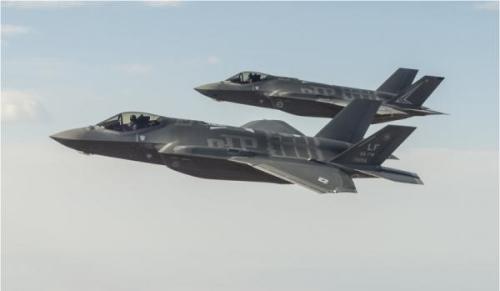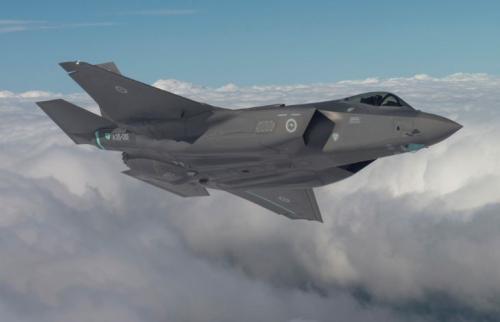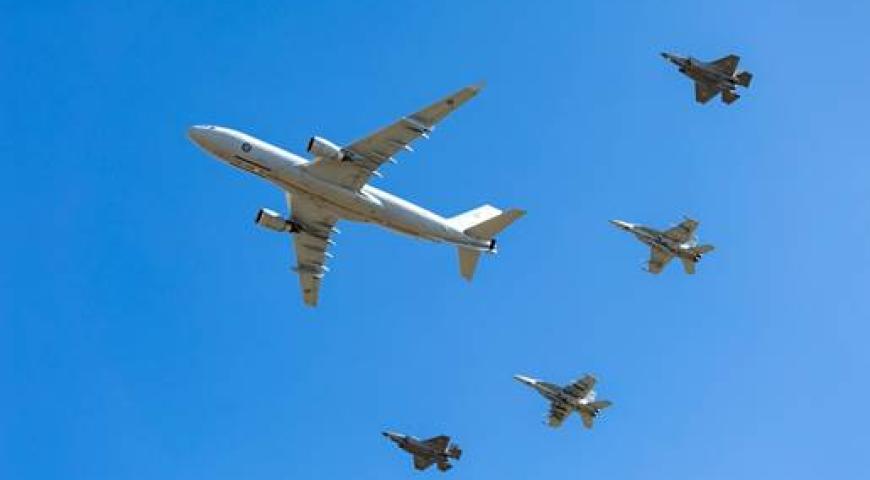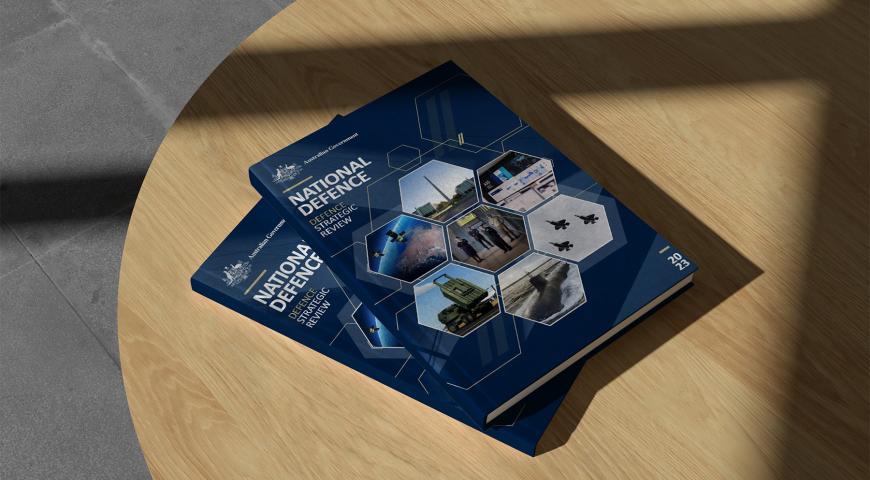
Forward-focused Professional Military Education forums have begun emphasizing that the emerging 4th Industrial Revolution will change the character of war. In Australia, Major General Mick Ryan is urging national security professionals to prepare now for this future battlefield, dominated by new technologies such as artificial intelligence; and new operating concepts, such as human-machine teaming. Whether or not you subscribe to a ‘revolution in military affairs’ most agree that technology coupled with organizational reform could profoundly alter the conduct of future military operations – and that whoever leads this transformation will dominate the next fight.
This three-part series examines how the arrival of the F-35 heralds a generational transformation opportunity, with implications for how the whole Australian Defence Force (ADF) - not just Air Force - will fight. A second paper will explore the parallel evolution of drones, now placing human-machine teaming within grasp. A third paper will explore potential capability opportunities arising from this nexus.
The arrival of Australia’s first two F-35s in December 2018 heralds the beginning of a new era for the ADF. As a fifth generation (5Gen) platform, the F-35 promotes a suite of ‘buzz’ words associated with evolving technology and capability: full-spectrum, low observability, network-centric sensor and communications suites, open systems architecture and lethal strike[footnote1].
The essence of this toolkit is the duo of stealth and information fusion [footnote2]. The former provides a degree of invisibility to enemy radars (at least for now)[footnote3] . The latter provides the pilot with the ‘big picture’ of everything that is around. This picture is augmented not only from the F-35’s own sensors, but from everyone else who joins the network and contributes to the picture. 5Gen enables a ‘battlespace internet’, where it is very hard for enemies to hide, but where the protagonist is invisible [footnote4]. It is this combination that promises to change the way Defence does 'business'’. Being able to see everything and yet not be seen provides a clear competitive advantage in warfighting.

The technology in the F-35 is not actually new; the systems have been in development for decades – and have taken their share of criticism. These include: cost overruns, schedule slippages, reliability, software flaws, and the twin design strategies of ‘concurrency’ and a ‘one-size-fits-all’ approach. In Australia, these criticisms led to a 2016 Parliamentary inquiry. That inquiry validated Australia’s faith in the F-35, concluding that ‘…the F-35A is the only aircraft able to meet Australia’s strategic needs for the foreseeable future, and that sufficient progress is being made…to address performance issues of concern.’
Retired USMC LTCOL David ‘Chip’ Berke, who flew F-18s and F-22s before commanding an F-35 squadron, believes people who try to judge the F-35 by the previous generation of fighters are ‘wrong all the time’. Berke likens the gap between the F-18 and F-35 to that between a wall phone and an iPhone, saying it will take time to figure out how to use the fundamentally different set of capabilities - which are more about information management than manoeuvrability. Berke sees the F-35 as a game changer that demands a new breed of pilots who won’t bring bad habits. As is common in any technology revolution, the transition from 4Gen to 5Gen demands that legacy thinking and experience be open to learning from a new breed, where the ‘students may be the teachers’.
The F-35 has already proved revolutionary in highly realistic exercises such as Red Flag, where the onboard integration of stealth and information fusion have dominated air combat engagements over traditional fighters. F-35s in Red Flag 17-1 scored a kill ratio of 20:1. USMC LTGEN Jon M. Davis, Deputy Commandant for Aviation cited a 24-0 kill ratio for USMC F-35Bs during a separate exercise. Aviation correspondent Tyler Rogoway cautions that such results need to be viewed alongside more information that is not yet publicly available. Nevertheless, he concedes the F-35 has performed very credibly, further validating the dominance of 5Gen over 4Gen aircraft.
These ‘clean sweeps’ indicate levels of capability - albeit not invincibility – that suggest pilots will be busy over the next few years optimizing new operating concepts. One such concept: the ‘quarterback’ role is already being described in aviation articles, where the F-35 acts as an information collector and distributor for older generation aircraft. The F-35 looks ahead and all around a combined strike package, fusing and forwarding vital threat information to other aircraft via Link 16 to enhance their survivability. Such teaming (pairing agile 4Gen fighters such as the F-15, F-18 and F-16 with the smarter 5Gen aircraft like the F-22 and F-35) provides new eyes and ears for the package as a whole. RAAF F-35 instructor Squadron Leader Andrew Jackson believes ‘this aircraft will give fighter pilots a level of situational awareness that far exceeds legacy platforms.’
The F-35 is just at the beginning of the combat development curve. The RAAF’s first F-35 squadron will not be fully operational until 2021, with the remaining fleet to follow in 2023. Leveraging these technologies as part of a system, including with other ADF platforms and sensors, and then fighting as a ‘team of teams’ offers a revolutionary advance in operating concepts over traditional ‘stove-piped’ approaches, where specialists held limited packets of information, largely determined by what they or a nearby sensor could muster.
What is not widely appreciated is how fast changes in technology are occurring that will change the way we fight. This includes the adoption of robot drones as wingmen, as modern air forces embrace a mix of manned and unmanned platforms operating on the same network. New technologies are poised to appear as an emerging jigsaw and we must be careful not to imagine the future as a distant horizon – somebody else’s problem. The advent of 5Gen may yet prove to be as Hemingway’s classic insight on how monumental changes occur: ‘gradually, then suddenly.’ The next paper will examine drone evolution and the emergence of the ‘loyal wingman’.
1. Fighter aircraft began to be classified by ‘generation’ from the 1990s. For an explanation of how each differ, see: www.quora.com/What-are-the-main-differences-between-4th-and-5th-generation-fighter-aircrafts
2. Information fusion results from ‘sensor’ fusion, being the way that computers synthesise and make sense of inputs from various sensors, freeing the pilot to focus on aerial tactics rather than detailed sensor management.
3. Stealth as a ‘low observability’ technology does not completely cloak an attacker, but can enable that attacker to get closer to enemy radar before being seen. Russia and China are experimenting with ground-based multi-band radars to attempt to overcome this advantage. A 2015/16 USAF study notes that F-35 and F-22 fighters may be unable to penetrate hostile airspace unseen beyond 2030. See: https://www.af.mil/Portals/1/documents/airpower/Air%20Superiority%202030%20Flight%20Plan.pdf
4. Invisibility is not dependent on stealth alone, but jammers such as the EA-18G Growler help to blind or mislead an enemy. It is the coordinated effect of 5Gen technologies that will produce disruptive effects.
Please let us know if you have discovered an issue with the content on this page.
Comments
Start the conversation by sharing your thoughts! Please login to comment. If you don't yet have an account registration is quick and easy.




